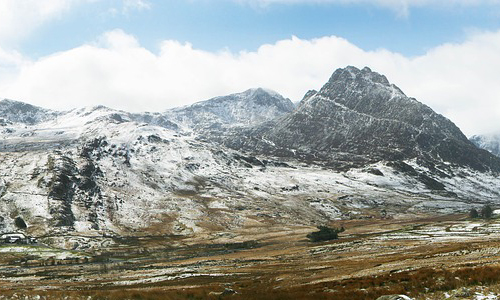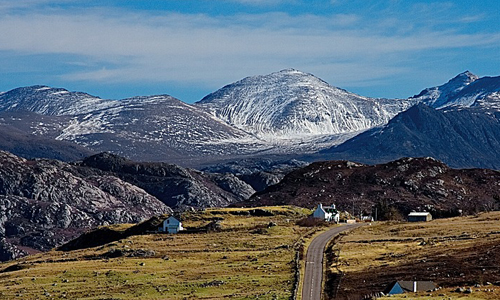Planning Around the Weather in The Summits of UK
If you live in the United Kingdom, then you are most probably aware of the extreme weather conditions the mountain side can harbour. Being someone who loves winter as much as I do and be willing to play around in the mountains during all my free hours. The most important thing is to take a look at the weather forecast to be prepared for what’s to come next for you.
The few things that need immediate focus while looking at the forecast are – Wind speed – Visibility – Precipitation – Temperature. Let’s take a closer look at how these factors can affect your time in the mountains.
Keep Track of the Wind Speed
I don’t know about others, but the forces of wind are what influence my plans the most. The winds on the summits of UK are about twice as strong than they are in the valleys. Make sure you a have a fixed cut off speed in your mind while reading the forecast. For me, it varies somewhere between 30-35 mph when I plan on going to a narrow ridge. However, I prefer 50- 55 mph as the maximum speed while on the summits.  These can serve as good reference points if you are a novice and you can develop your tolerance in due time, it’s not like this is a constant value. According to the Beaufort scale, 32-38 mph is described as a Force 7 or Moderate Gale wind, in which whole trees seem in motion and high resistance is felt in walking. However, 55-63 mph suggests that a whole Gale worth Force 10 is in motion, that usually points towards structural damage on land. Whereas, at the same time, the speed in the valleys may be 20mph.
These can serve as good reference points if you are a novice and you can develop your tolerance in due time, it’s not like this is a constant value. According to the Beaufort scale, 32-38 mph is described as a Force 7 or Moderate Gale wind, in which whole trees seem in motion and high resistance is felt in walking. However, 55-63 mph suggests that a whole Gale worth Force 10 is in motion, that usually points towards structural damage on land. Whereas, at the same time, the speed in the valleys may be 20mph.
Ensure Visibility of Your Route
High altitudes clubbed with low temperature results in extreme fog that might affect your vision. In such cases, it is best to plan out your routes in such a way that matches your navigation skills and you are able to find your way easily. In case you are new to using a map and compass for navigation, then keep it on simple days when clouds are lower to the ground. However, the most striking of the factors that affect visibility is the sunlight and so it is advisable that you plan your route accordingly.
Check Precipitation Reports
It is obvious that I would carry waterproof clothing whenever I go hiking in the mountains, and I will suggest the same for any of those out there who are novices when it comes to hiking in the windy summits. The only reason for carrying and wearing waterproof gear is to avoid getting cold. Often, our trail routes include stream crossings or sometimes unwanted rains pour which can surely make you dripping wet in the harsh weather. 
In case of heavy rains, try to avoid the summits altogether because the lightning and thunder won’t be great for your safety.
However, if the freezing level drops and starts snowing, then a winter kit is a must.
Do a Temperature Check
When I plan a day out in the mountains, I make sure to check the temperature in the summits before heading out. Doing so helps me be prepared with extra clothing and gear such as my winter kit, ice axe and crampons. As we climb higher, the altitude drops. However, one can expect the temperature to drop by 1 degree Celsius for every 100m height gained, or 1 degree for every 300 m of height gained. In fact, the windier it gets, the exposed skin will get colder still.
I hope my experiences and the information I have provided proves to be a bit helpful when you plan a trek or hike the next time in the mountains.
Categories
- Sport (28)
- Product Reviews (3)
- Team Outdoor Look (7)
- Mike Wild (2)
- Mike Payton (2)
- Suse Hammond-Pears (3)
- Snowboarding (12)
- Latest Offers (105)
- Shop Talk (1)
- Competitions (7)
- Walking (413)
- Lifestyle Fashion (8)
- Travel (86)
- Kit Guides (176)
- Workwear Clothing (6)
- Safety Workwear (4)
- Health/Fitness (289)
- Skiing (91)
- Great Outdoors (1316)
- Cycling (92)
- January 2025
- December 2024
- November 2024
- October 2024
- September 2024
- August 2024
- July 2024
- June 2024
- May 2024
- April 2024
- March 2024
- February 2024
- January 2024
- December 2023
- November 2023
- October 2023
- September 2023
- August 2023
- July 2023
- June 2023
- May 2023
- April 2023
- March 2023
- February 2023
- January 2023
- December 2022
- November 2022
- October 2022
- September 2022
- August 2022
- July 2022
- June 2022
- May 2022
- April 2022
- March 2022
- February 2022
- January 2022
- December 2021
- November 2021
- October 2021
- September 2021
- August 2021
- July 2021
- June 2021
- May 2021
- April 2021
- March 2021
- February 2021
- January 2021
- December 2020
- November 2020
- October 2020
- September 2020
- August 2020
- July 2020
- June 2020
- May 2020
- April 2020
- March 2020
- February 2020
- January 2020
- December 2019
- November 2019
- October 2019
- September 2019
- August 2019
- July 2019
- June 2019
- May 2019
- April 2019
- March 2019
- February 2019
- January 2019
- December 2018
- November 2018
- October 2018
- September 2018
- August 2018
- July 2018
- June 2018
- May 2018
- April 2018
- March 2018
- February 2018
- January 2018
- December 2017
- November 2017
- October 2017
- September 2017
- August 2017
- July 2017
- June 2017
- May 2017
- April 2017
- March 2017
- February 2017
- January 2017
- December 2016
- November 2016
- October 2016
- September 2016
- August 2016
- July 2016
- June 2016
- May 2016
- April 2016
- March 2016
- February 2016
- January 2016
- December 2015
- November 2015
- October 2015
- September 2015
- August 2015
- July 2015
- June 2015
- May 2015
- April 2015
- March 2015
- February 2015
- January 2015
- December 2014
- November 2014
- October 2014
- September 2014
- August 2014
- July 2014
- June 2014
- May 2014
- April 2014
- March 2014
- February 2014
- January 2014
- December 2013
- November 2013
- October 2013
- September 2013
- August 2013
- July 2013
- June 2013
- May 2013
- April 2013
- March 2013
- February 2013
- January 2013
- December 2012
- November 2012
- October 2012
- September 2012
- August 2012
- July 2012
- June 2012
- May 2012
- April 2012
- March 2012
- February 2012
- January 2012
- December 2011
- November 2011
- October 2011
- September 2011
- August 2011
- May 2010
- April 2010
- March 2010
- February 2010
- January 2010
- November 2009
- October 2009
- September 2009
Submit a Comment